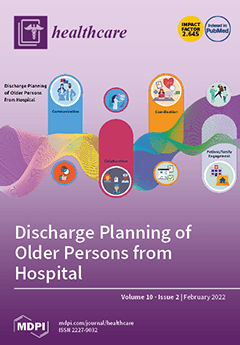This work aimed to relate alcohol consumption with adherence to the Mediterranean diet (MD) and with food neophobia (FN) among Italian and Spanish university students. Volunteers (
n = 194, 108 Italian and 86 Spanish), recruited at the La Sapienza University of Rome
[...] Read more.
This work aimed to relate alcohol consumption with adherence to the Mediterranean diet (MD) and with food neophobia (FN) among Italian and Spanish university students. Volunteers (
n = 194, 108 Italian and 86 Spanish), recruited at the La Sapienza University of Rome and the Catholic University of Murcia, filled in standardized questionnaires to evaluate alcohol consumption (AUDIT), FN (FN Scale: FNS), and adherence to the MD (MDS-14, MED-55, QueMD). In addition to the previously reported QueMD sub-score (aMED), a sub-score for non-typical MD foods (ntMED, carbonated and/or sugar-sweetened beverages (soft drinks), butter, margarine, or cooking cream, and manufactured sweets, pastries, and cakes) was evaluated. Italian females had higher MED-55 and FNS scores, and a lower AUDIT score than Spaniards (
p < 0.01). Students who stayed with their family (resident) were more adherent to MD than those who moved away from home. Resident Italians consumed less beer, hard liquors, and cocktails than Spaniards on Saturday nights (
p < 0.01). There were negative correlations between AUDIT and QueMD (R squared: 0.137,
p < 0.05), and AUDIT and ntMED (R squared: 0.201,
p < 0.01) in Spaniards, however, there was no relationship between AUDIT and other MD scores. In conclusion, this pilot study suggests that non-typical MD foods and Saturday night consumptions, related to being far from home, have a great impact on alcohol consumption.
Full article






